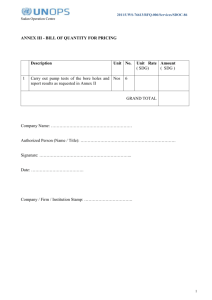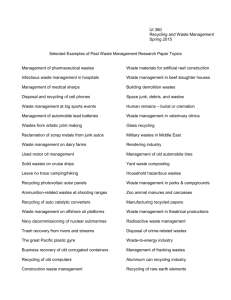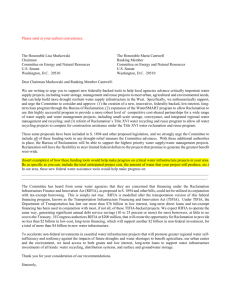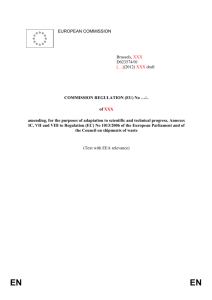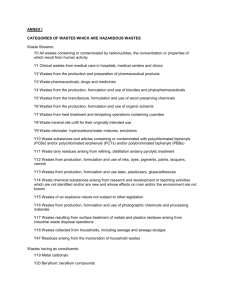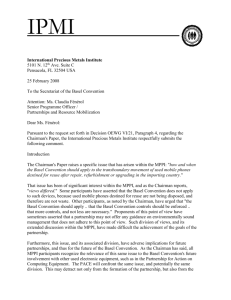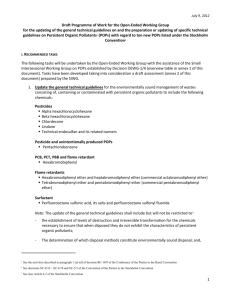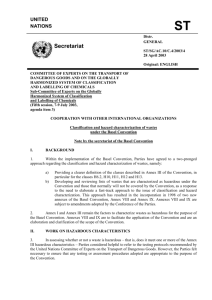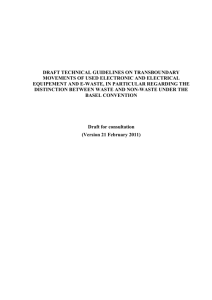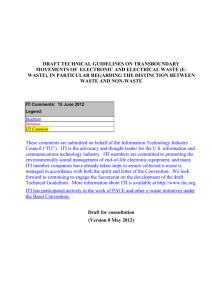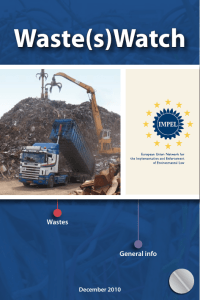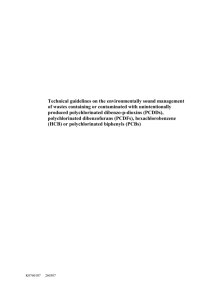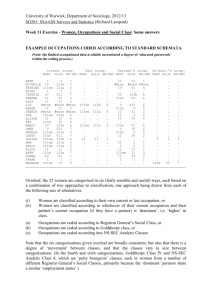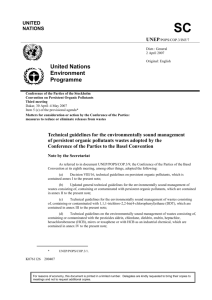list of issues
advertisement
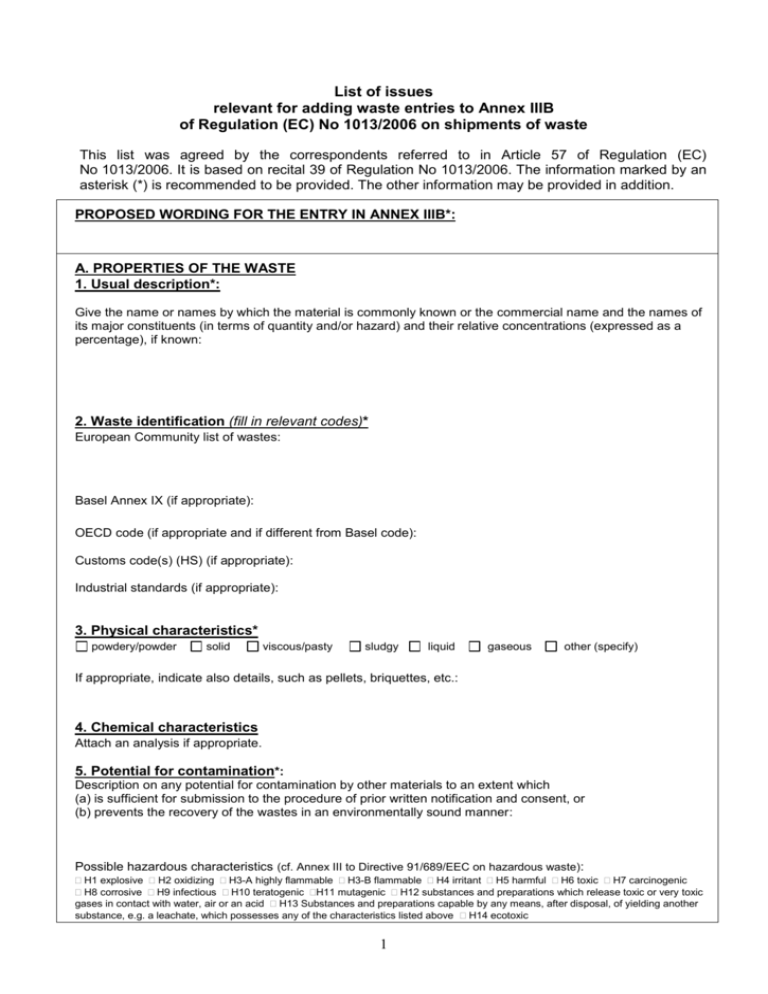
List of issues relevant for adding waste entries to Annex IIIB of Regulation (EC) No 1013/2006 on shipments of waste This list was agreed by the correspondents referred to in Article 57 of Regulation (EC) No 1013/2006. It is based on recital 39 of Regulation No 1013/2006. The information marked by an asterisk (*) is recommended to be provided. The other information may be provided in addition. PROPOSED WORDING FOR THE ENTRY IN ANNEX IIIB*: A. PROPERTIES OF THE WASTE 1. Usual description*: Give the name or names by which the material is commonly known or the commercial name and the names of its major constituents (in terms of quantity and/or hazard) and their relative concentrations (expressed as a percentage), if known: 2. Waste identification (fill in relevant codes)* European Community list of wastes: Basel Annex IX (if appropriate): OECD code (if appropriate and if different from Basel code): Customs code(s) (HS) (if appropriate): Industrial standards (if appropriate): 3. Physical characteristics* powdery/powder solid viscous/pasty sludgy liquid gaseous other (specify) If appropriate, indicate also details, such as pellets, briquettes, etc.: 4. Chemical characteristics Attach an analysis if appropriate. 5. Potential for contamination*: Description on any potential for contamination by other materials to an extent which (a) is sufficient for submission to the procedure of prior written notification and consent, or (b) prevents the recovery of the wastes in an environmentally sound manner: Possible hazardous characteristics (cf. Annex III to Directive 91/689/EEC on hazardous waste): H1 explosive H2 oxidizing H3-A highly flammable H3-B flammable H4 irritant H5 harmful H6 toxic H7 carcinogenic H8 corrosive H9 infectious H10 teratogenic H11 mutagenic H12 substances and preparations which release toxic or very toxic gases in contact with water, air or an acid H13 Substances and preparations capable by any means, after disposal, of yielding another substance, e.g. a leachate, which possesses any of the characteristics listed above H14 ecotoxic 1 6. Information on the process(es) by which the waste is produced*: B. MANAGEMENT ASPECTS 1. Technological capacity Estimated capacity for recovery in the EU in tonnes: Estimated amount of facilities for recovery in the EU: 1 2-10 >10-100 >100-1000 >1000 Possible third countries where recovery facilities are located: 2. Packaging types Drum Wooden barrel Jerrican Box Bag Composite packaging Pressure receptacle Bulk Other (specify): 3. Storage Methods of storage at the recovery facility (if appropriate): 4. Trade aspects Amount of waste shipped within the EU (rough indication): Amount of waste export from the EU or import to the EU from third countries (rough indication): 5. Recovery operation(s) for the waste* (cf. Annex IIB to Directive 2006/12/EC on waste): R1 R2 R3 R4 R5 R6 R7 R8 R9 R10 R11 R12 R13 Use principally as a fuel or other means to generate energy Solvent reclamation/regeneration Recycling/reclamation of organic substances which are not used as solvents (including composting and other biological transformation processes) Recycling/reclamation of metals and metal compounds Recycling/reclamation of other inorganic materials Regeneration of acids or bases Recovery of components used for pollution abatement Recovery of components from catalysts Used oil re-refining or other reuses of previously used oil Land treatment resulting in benefit to agriculture or ecological improvement Use of wastes obtained from any of the operations numbered R 1 to R 10 Exchange of wastes for submission to any of the operations numbered R 1 to R 11 Storage of wastes pending any of the operations numbered R 1 to R 12 (excluding temporary storage, pending collection, on the site where it is produced) 2 6. Description of recovery operation(s)* Indicate the technologies employed for the non-interim recovery operation(s): Indicate the technologies employed for any interim recovery operation(s): 7. Use of recovered materials (e.g. compliance with technical/industrial quality standards): 8. Recovery quota (rough indication)* Amount of recovered material in relation to non-recoverable waste: Non-recoverable fraction (list typical fractions and their major constituents): Typical method of disposal (operation) for the non-recoverable fraction: C. ENVIRONMENTAL BENEFITS Overall environmental benefits of the recovery of the waste*: Virgin material conservation Energy conservation Emission reduction (e.g. reduction of greenhouse gas emissions) Reduction of the amount of waste destined to disposal Other (please describe): D. ENFORCEABLILTY Possible methods for the control of compliance of the waste with the proposed entry for Annex IIIB by enforcement officers (e.g. simple tests)*: 3




